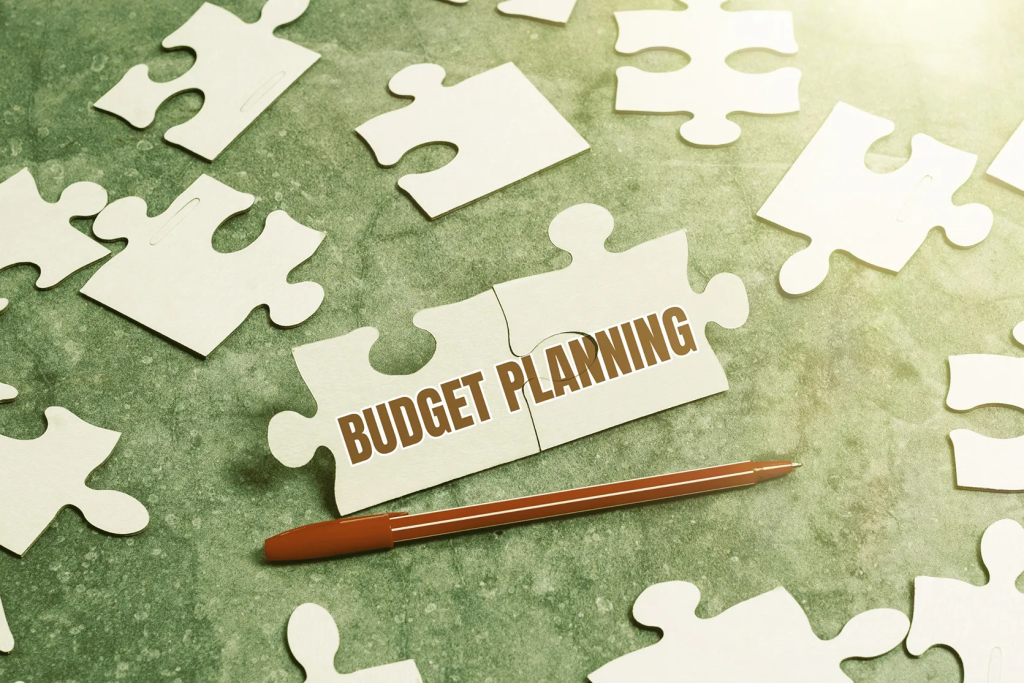You can boost your business’s chances of success by expanding your operations, purchasing new software, purchasing goods, or hiring more employees. They do, however, necessitate capital. Budgeting and forecasting capital are the two most beneficial strategies for establishing long-term, successful business plans.
There are several significant distinctions between budgeting and financial forecasting that entrepreneurs must be aware of before starting a company. While budgeting focuses on daily company goals, forecasting is concerned with more significant strategic choices; however, these two aspects can be valuable in assisting an organization in attaining complete economic sustainability.
A financial forecast can help teams plan ahead of time for circumstances that could result in significant and negative ramifications for cash inflows. A business can protect itself from monetary threats with the help of this data by conducting financial forecasting initiatives. It is a good business strategy to implement financial planning that ensures that the company’s working capital is tracked and analyzed.
Despite what the majority thinks, budgeting and forecasting are not the same. In this blog, we will be diving into detail on the difference between forecast and budget, what financial forecasting is, what budgeting is, how to plan a budget for small businesses, and how to do financial forecasting that can help simplify budgeting.
Budget vs Forecasting: Main Differences
- The most significant difference between a forecast and a budget is that a budget provides the strategy for what a business intends to accomplish, and a forecast submits the business’ financial projections for outcomes elaborately. A forecast is a reflection of a company’s current trajectory, while a budget is a roadmap for the direction it intends to go.
- Budget projections are prepared for a shorter period, ranging from one month to one year, whereas financial forecasts are designed for longer periods, typically ranging from 1 to 10 years.
- When compared to financial forecasting, which is amended repeatedly to include real-time data, budgeting is relatively stable and modified less often to keep pace with market trends.
- Budgets are strategic management tools that assist businesses in controlling their processes throughout an accounting cycle. Forecasts are strategy implementation tools that aid businesses in preparing for long-term progress.
- Financial forecasts are merely predictions, whereas budgeting sets objectives for future performance and is therefore used to compare real-world outcomes to those projected.
What Is Budgeting in Business?
Budgeting is a financial roadmap that analyzes expenses and revenues for periods ranging from less than a month to a fiscal year, to plan for financial positions and objectives for the following year. In addition to defining your strategy, budgeting can be used as a management tool for evaluating your company’s performance levels while also assessing the feasibility of your strategy and your business’ projected finances. Before the execution of any project, the budget is always defined, even before the finance forecast.
Budgeting is critical for small businesses as they:
- Establish financial objectives and deadlines,
- Direct your plan of action and control hazards,
- Set aside funds for or prioritize tasks that will immediately improve your company’s financial health,
- Manage debts,
- Plan for unforeseen economic circumstances and regulate working capital
- Raise funds to grow your company.
What Is Financial Forecasting in Business?
A financial forecast is a compilation of projected financial statements that include a sales forecast, expense budget, income projection, cashflow statement, and assets and liabilities that estimate the financial future of a company based on historical data. These projections can be short-term or long-term. A qualified financier would advise your small business to create a best-case, worst-case, and standard financial scenario to be prepared for all economic circumstances, especially during the initial phases of your business.
Financial forecasting is important for small businesses since it:
- Assists in making more data-driven business decisions,
- Helps stay afloat through recessions, pandemics, or natural calamities,
- Assists in determining whether expanding your workforce, opening more branches, or purchasing supplies can be done without negatively impacting your cash flow,
- Determines the sources of any financial issues, and
- Raises capital or attracts investors to help the company flourish.
Things to Focus on While Making a Budget
With a budget projection, your company can anticipate unforeseen costs, be ready for them when they happen, and adjust its strategies accordingly to avoid damaging the financial management process.
We have put together guidelines to assist you in effectively evaluating your budget to remain at the forefront of your finances and maintain the stability of your company:
Revenue Sources
For more effective budgeting, it is critical to comprehend how much income comes in monthly. You can find trends, patterns, and seasonal fluctuations by listing all sources of income and computing monthly income for 12 to 24 months.
Fixed or Operating Costs
Your company’s fixed costs include ongoing daily, monthly, or annual expenditures, such as rent, payroll, and web hosting. Small businesses can show projected fixed costs during their early stages of operation.
Variable Costs
Analyzing variable costs, including supplies and materials, transportation expenses, and advertising costs will help your company reduce expenses during slow business times.
One-time Purchases
The one-time budgeting expenses are those that occur occasionally, including hardware and technology. You’ll soon understand why it’s necessary to budget for these expenses as they frequently relate to goods that are critical to the operation of your organization.
Emergency Fund
It’s important to include unanticipated expenses in your budget. It’s crucial to set aside money to maintain your company’s operations if equipment fails or a natural disaster strikes.
Profit and Loss Statement
A profit and loss statement is produced by adding all sources of income and all other expenditures and deducting the total from the total revenue. Making a P&L statement can help you better assess your financial affairs, regardless of whether your business has a net positive (profit) or negative (loss) cash flow.
This will enable you to determine what generates more earnings and where to eliminate superfluous costs. If your company is profitable, it could be due to marketing or software you purchased. Finding and bolstering these elements can be incredibly beneficial for your business.
Creating Your Monthly Budget Plan
Setting a monthly budget, especially in the early stages, can help you anticipate future investments like manpower, software, or stockpiling. You’ll be able to determine when your firm is performing well and when it isn’t from all the earlier points we stated, allowing you to adjust your focus following changing market trends.
Top Benefits of a Budget Forecast
Budgeting has a lot of advantages, such as:
- Efficiently handling your finances
- Allotting sufficient budgets for projects
- Performance tracking
- Achieving overarching business goals
- Enhancing your ability to make profitable business decisions
- Recognizing monetary issues before they arise
- Establishing long-term plans
- Boosting employee morale by ensuring continued, fixed, and fair compensation
How to do Financial Forecasting
To produce accurate financial forecasts, it is crucial to ascertain the forecast’s goals, probable impacts, and time frames. This will be a significant asset for your business plan when you apply for funding, in addition to helping your company grow in the right direction. It assists everyone in the business in concentrating on a single objective.
For improved business performance, financial forecasts frequently incorporate the following:
- Revenue Projection – The analysis of your revenue over the course of 6, 12, or 24 months is important. This will make clearer precisely how much you anticipate selling and how much capital you’ll need to invest in running and expanding your company.
- Cost of Goods Sold (COGS) – COGS estimates will assist you in determining the amount it will cost your business to manufacture your goods.
- Expenditure Projection – The forecasted expenses will take into account any new software, advertising budget, auditing, and legal service costs.
- Payroll – Payrolls can include freelancers, marketing agencies, accountants, and company executives. In the initial launch phases, these may be among the most expensive.
- Cash Flow Projections – A cash flow projection is an overview of payables (expenses) and receivables (revenue). Your monthly cash reserve is calculated by deducting your accounts payable from your accounts receivable. It is credited to your cash balance and rolled over to the following month. Forecasting your finances is made easier with the help of cash flow estimates, which reveal if and how much revenue your business is making.
- Balance Sheet – The balance sheet consists of assets and liabilities, and equity shares. The expected net value and financial performance of your business can be calculated using the balance sheet.
Sum Up
It is typical for entrepreneurs to experience high and low business seasons. Small businesses must manage their budgeting and forecasting to accommodate these fluctuating periods. This enables your business to stay afloat even in trying times and regulates cash flow. This is why it is important to establish your budgeting and forecasting process, irrespective of whether you run a small business or are an entrepreneur.



























